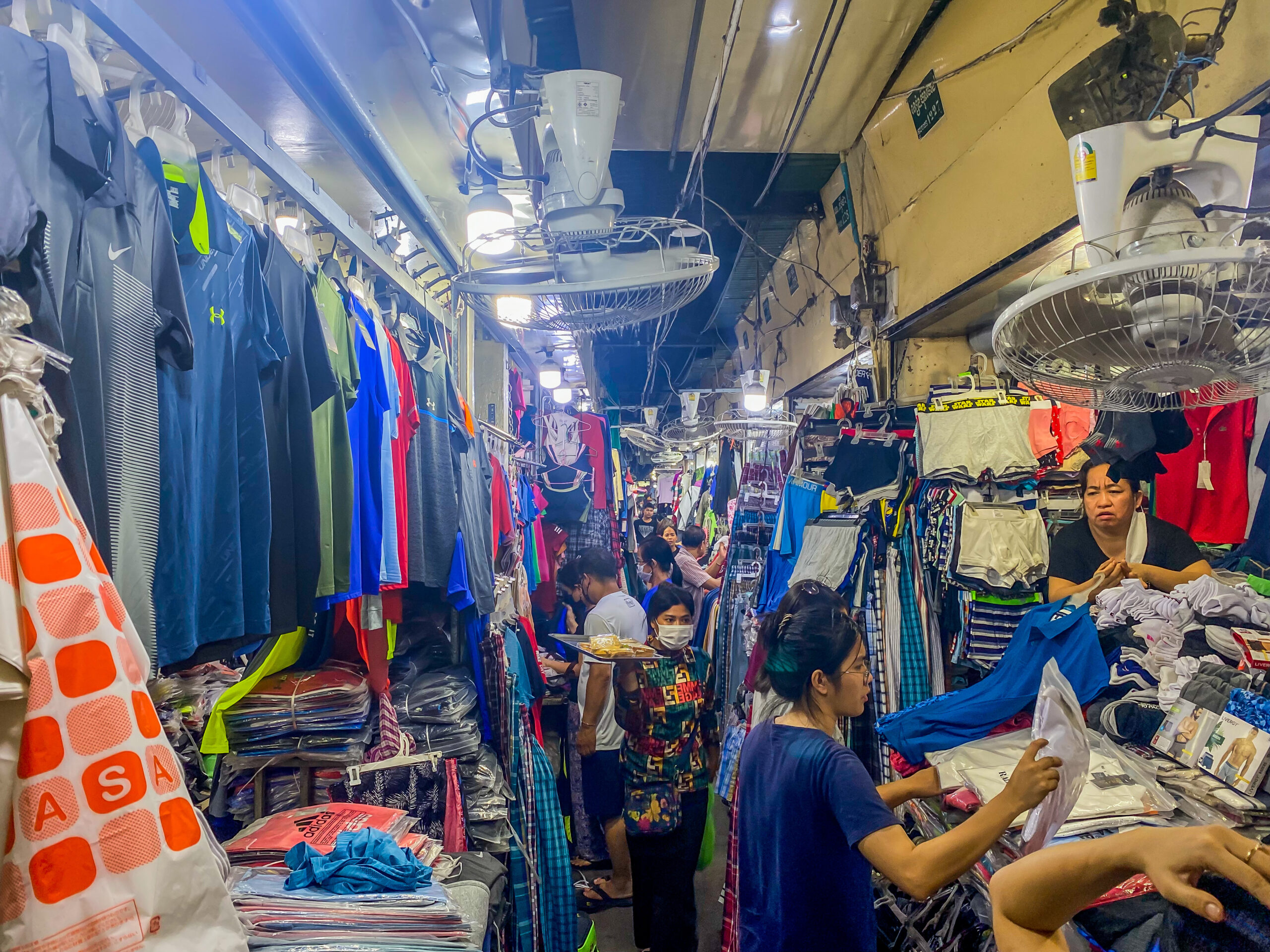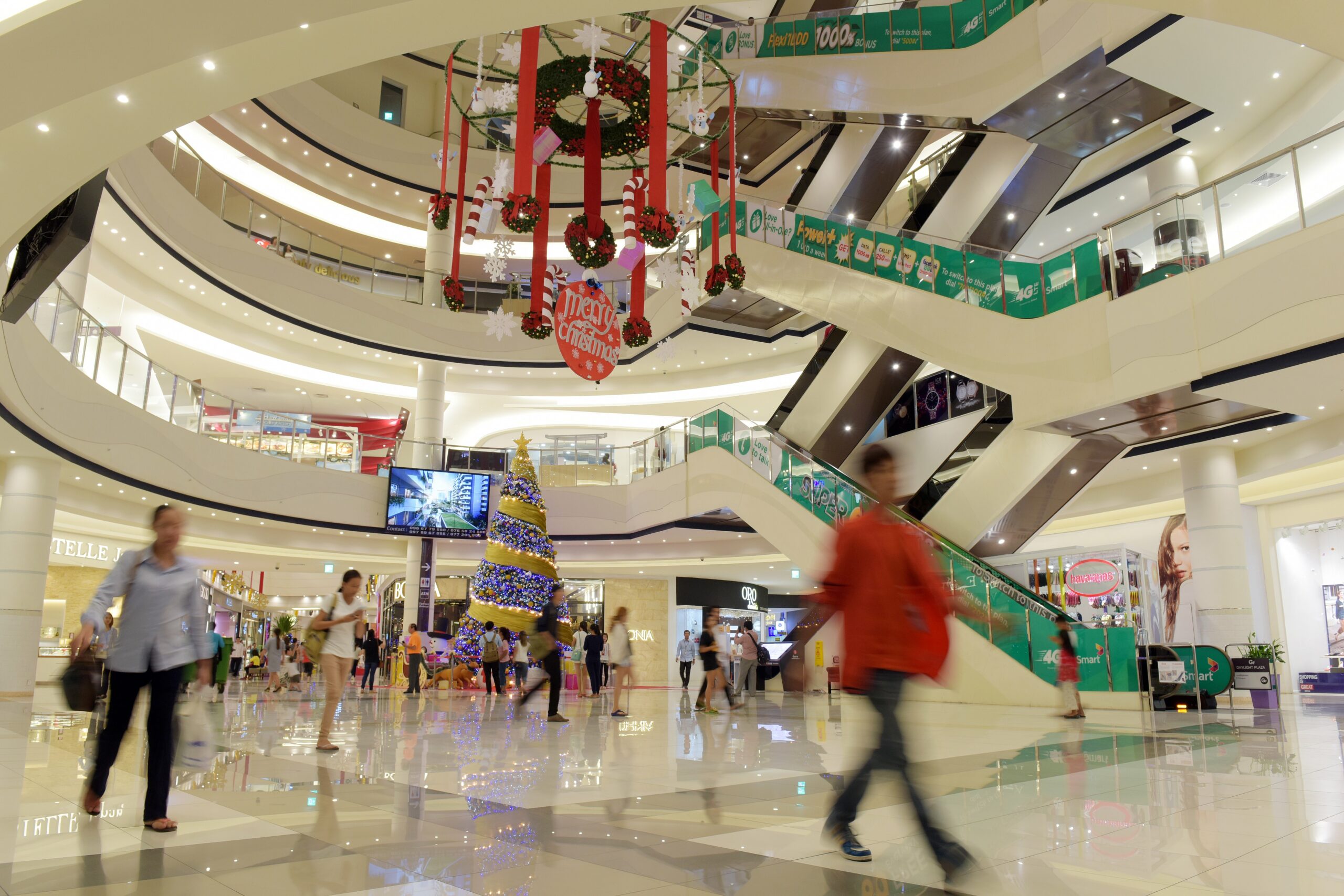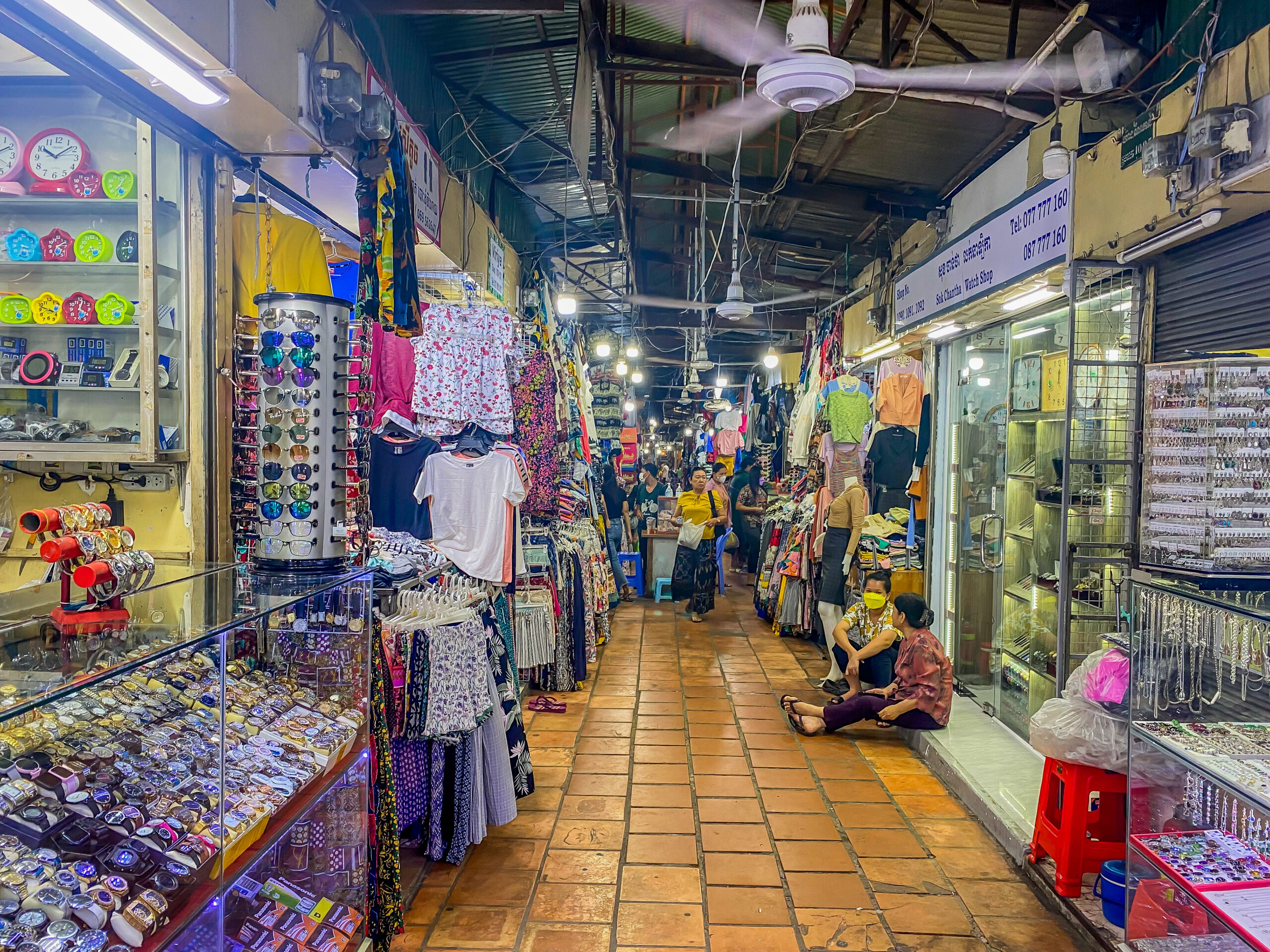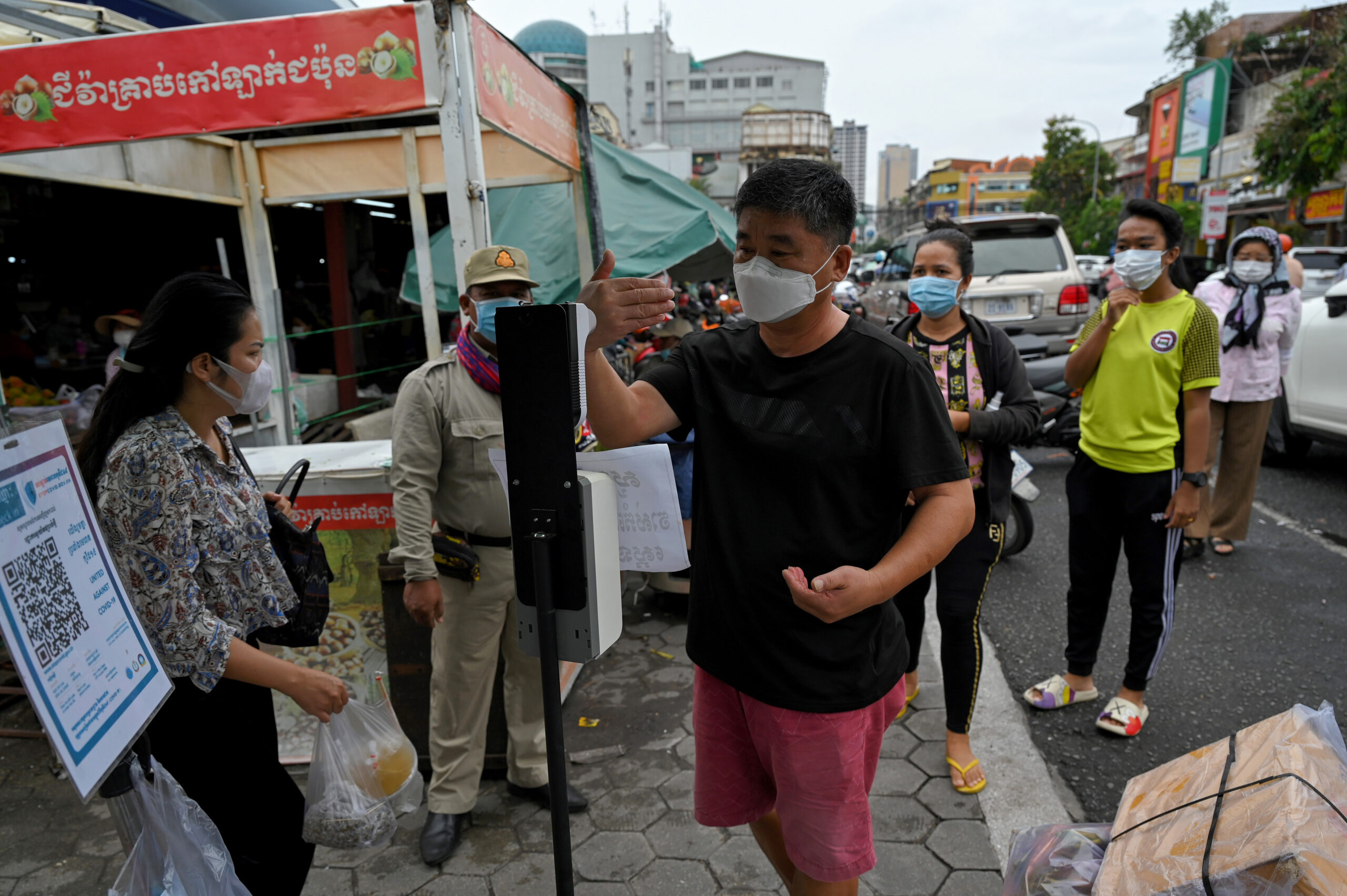Morning starts early for local vendors at Tuol Tompoung Market in Phnom Penh. In one corner, sellers offload raw meats and fish onto platters as the aroma of a fresh catch circulates. The din of merchants calling across the aisles gets louder as the day grinds on. Narrow alleyways are lined with low table stalls filled with a variety of goods as customers wind their way through, attempting to nab the freshest produce at a bargain.
Sellers stock a huge variety of products ranging from fresh vegetables to meat, to fabric and jewellery. But customers can also find other items like watches, electronics, household appliances, and even get a haircut on the way out.
In Phnom Penh, the most prominent traditional markets are Central Market also known as Phsar Thmei, Toul Tompong, Orussey, and others. These traditional markets are among the most vibrant public spaces Cambodian cities have to offer. Some say one can get to know a city through its traditional markets, as they best reflect the city’s identity.
But as Phnom Penh changes and modernises, the city may be at risk of losing these culturally important spots. If these social spaces disappeared, it could result in a bigger divide between members of these communities.

Modern consumerism
New amenities and designs, a variety of luxury retails and food options, and arcade sections with a bowling alley and movie theatres make modern malls a growing popular destination for shopping and entertainment.
With the country’s rapid economic growth, Cambodians are experiencing a new level of consumerism. Since Cambodia transformed from a low-income to a low-middle-income country in 2015, its GDP rose constantly for the past decade. Largely due to garment exports and tourism, Cambodia’s economy maintained an average annual growth rate of 7.7 percent between 1998 and 2019, becoming one of the quickest-growing economies in the world.
Consequently, this brings about benefits for its people. The population enjoys an influx of new and modern goods and services in the retailing industries. More and more Cambodians are flocking to modern shopping centres and other more convenient and ‘modernised’ alternatives.
There is a clear increase in shopping mall construction in Phnom Penh, such as Aeon, Eden Garden, and Noro Mall.

This increase is partly due to population growth, increases in disposable income, the growing convenience of shopping, and ease of access interest rate for loans from microfinance institutions.
Beside the various formats of modern markets, e-commerce is also battling its way to be part of the equation in redefining this new norm for Cambodian consumer habits.
With the Covid-19 pandemic resulting in city lockdowns and the extended closure of physical markets, more people are turning to the convenience of using their mobile phones to order food and other products delivered to their doorsteps.
This movement is shaping a new form of consumerism in Cambodian society. The slow yet steady switch from traditional to modern retail poses a potential threat to the existing shopping traditions of traditional markets.
But there is value that traditional markets can provide that can’t be found as easily in flashy shopping centres, and some of these benefits are much more abstract than expensive clothes, jewellery or designer bags. Traditional markets provide neighbourhoods and residents with a sense of identity, feelings of community, and a space to connect.
A social asset

Despite the cluttered and sometimes dilapidated pathways, dense with goods on all sides, traditional markets remain an integral social asset, one in which strengthens the cohesion of Cambodian communities.
The physical environment of traditional markets enable close and personal connections among the vendors and also between vendors and their customers. The compactness of the market’s interior, the narrow walkways, the close proximity from one vendor’s allocated space to the other. These features naturally generate social interactions within this community.
Among vendors who sell the same products, there is not always a competition. Sometimes vendors are happy to direct their customers to a neighbour’s stall nearby for items that are not available at their own store.
Regular shoppers of any traditional market usually make their daily visit to the same stalls, developing close friendships with their fellow customers.
In Khmer, a frequent customer is called a “moy” (មូយ). And ‘moys’ sometimes request their sellers to pay later and sellers often happily accept as they know their moys will return back to their stores.This unspoken, special trust, between the vendors and the customers is quite typical within these markets.
Another distinct form of social exchange that can only be found in traditional markets is bargaining.
Despite bargaining being an act of self-benefit, buyers and sellers have longer interactions through bargaining as compared to a typical purchase and paying at a counter in a supermarket.
Such bonds and social exchanges between sellers and customers are not commonly found in other commerce settings. Modern shopping centres have wide doorways and large floor plans, each store is partitioned with a glass enclosure, making it hard for close, meaningful social interaction to be formed.
Another important factor is the affordability within a traditional market, which helps to minimise the social gap between people from different income brackets. A monthly rental fee of a stall in Central Market ranges between $300-$600 depending on the location and the size of the stall.
The price may be as low as around $140 for a lesser known market. At AEON mall in Sen Sok, on the other hand, a lease for a ground-floor unit of 112 square metres can cost up to $2,500 per month.
From a customer’s perspective, the price gap at a traditional local market and at a shopping mall is also significant. For instance, a 350ml can of Coke sells for 1 dollar at AEON mall, while the exact same drink can be bought for about 30 cents or even less at traditional markets.
These low-costs establish a space for communities to meet regardless of their socio-economic status. In contrast, the communities with lower income are unlikely to be frequent visitors of the bigger higher-priced malls.
This is partly due to the perceptions associated with modern shopping malls, which make these places less approachable, especially for people from lower socioeconomic status. These glitzy shopping centres are usually filled with high-end retail businesses and luxurious international brands whose stores are designed to exude sophistication, with an intent to appeal to a certain target group of customers.
These modern structures embed social norms that force visitors to feel that they should appear a certain way to enter the malls.
In this sense, traditional markets present an equitable environment with no protruding sense of intimidation or discrimantion due to classes or age groups, making it a safe space that is socially accessible to all members of society.
The future of traditional markets

As Cambodian society turns further towards western forms of commerce, it’s important to consider whether and how these traditional markets might retain their place in our lives.
In moving forward, there are two possible courses of action. The first is to address some of the issues within traditional markets that could enhance the shopping experience and make these spaces more convenient, even more inclusive, and safer, without losing out on the more charming aspects of these markets.
One study proposed a redesign and renovation of one traditional market in the city of Bandung in Indonesia. The redesign cleaned the muddy floors, the strong smell from food and wet sections of the market, as well enhancing natural light and ventilation. The study proposed installation of a water supply network to flush waste water from stores, and walls with lattice facades inviting natural ventilation and light.
Traditional markets in Phnom Penh also encounter similar issues and could draw from these solutions to improve the safety and comfort of our traditional markets. Any renovations or redesigns should also include accessibility features so that Cambodians with disabilities can also navigate these spaces easily.
The second course of action would be to make use of the best of what traditional markets have to offer within the new markets and shopping malls.
Future retail development should explore ways to conserve the identity and social values embedded within these traditional markets. In Bangkok’s biggest and finest shopping centre, ICONSIAM, one of the mall’s prominent highlights is SookSiam, a huge zone in the middle of the modern structure. The space aims to preserve the country’s traditions of floating markets, including stores and stalls reflecting the traditional settings of old Thai markets.
But preservation does not have to look this extravagant and it does not require millions of dollars. Preserving traditional markets can come in different forms. Fundamentally, any future projects that attempt to modernise and simplify shopping must seriously consider the protection of the underlying social and communal fabric embedded in markets. Even as retail modernises, it’s a part of life that can and should connect members of our society together.
Keithya Oung Ty is a research fellow at Future Forum, a public policy think tank in Cambodia.


